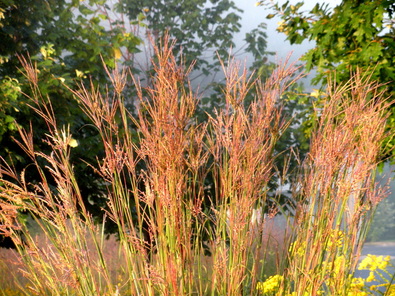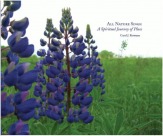
However the earth was intensely fertile this year. After our late burn during the first week in May, the lakeside of the field came back stronger than ever. The big bluestem and Indian grass, which have mellowed into golden brown, are taller than our heads and their roots reach even farther beneath the surface. This week a hard frost accented each stem and shoot in the field, bounded by still colorful trees in the distance. I especially liked the sparkling switch grass, which is sure to amaze me all winter.
The bright flowers have gone to seed, each in their unique way. I’m thankful for the milkweed in its many iterations that remain showy all year long. The fallen leaves in the woods are dry and crunchy, while the monster trees still hold some at their heights. The abundance of our cultivated garden has been cooked or stored. We see fewer critters around but they leave their scat on the warm driveway. Our faithful companions, the swan family, are still with us as they teach the young ones to fly. We never know when we will hear the last swish of their elegant wings as they leave us for the winter.
The other day, we gave a talk in a series called, “Tending God’s Garden.” I had to admit to the audienthat mostly God tends us in this prairie garden. Now, as we face November, the hardest month to love in climates like Michigan we still count on being tended even though death blankets the earth and the promise of resurrection seems like a “pie in the sky” kind of idea. But new life comes this way—it is part of the plan. Even the skeletons of plants and the ice on Flat Iron Lake assured us that seedtime and harvest and bluegills will come again!

 RSS Feed
RSS Feed
